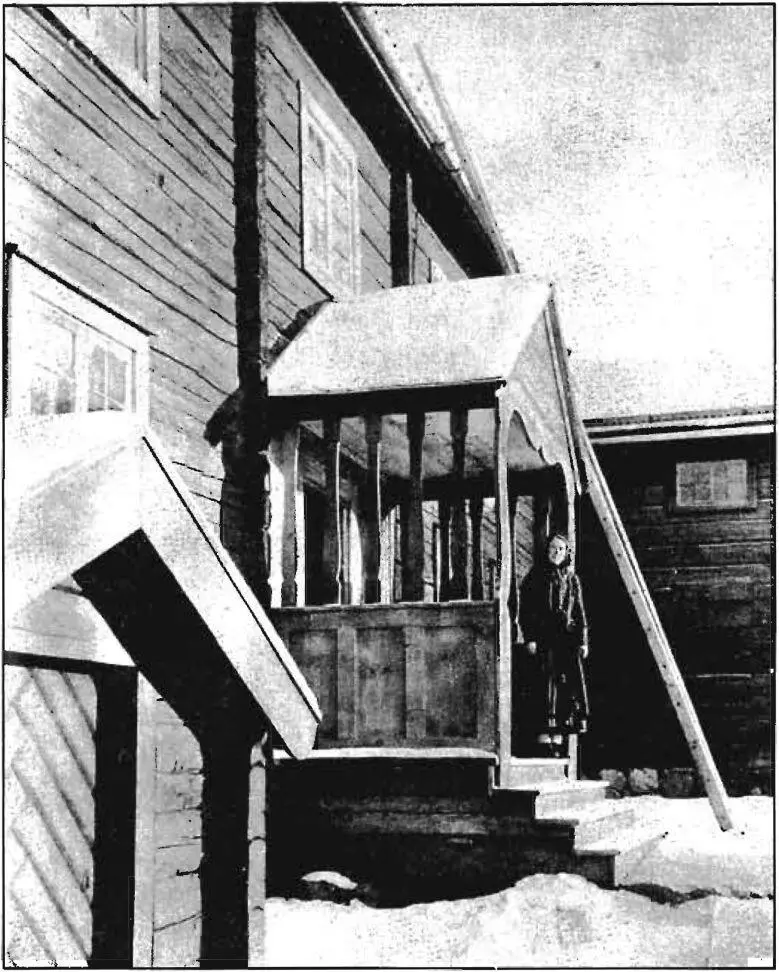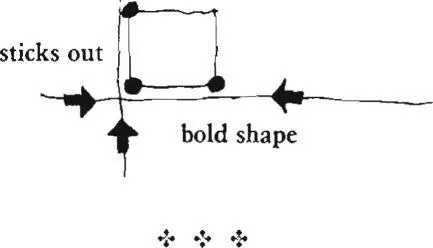Christopher alexander - A pattern language
Здесь есть возможность читать онлайн «Christopher alexander - A pattern language» весь текст электронной книги совершенно бесплатно (целиком полную версию без сокращений). В некоторых случаях можно слушать аудио, скачать через торрент в формате fb2 и присутствует краткое содержание. Жанр: Прочая научная литература, на английском языке. Описание произведения, (предисловие) а так же отзывы посетителей доступны на портале библиотеки ЛибКат.
- Название:A pattern language
- Автор:
- Жанр:
- Год:неизвестен
- ISBN:нет данных
- Рейтинг книги:3 / 5. Голосов: 1
-
Избранное:Добавить в избранное
- Отзывы:
-
Ваша оценка:
- 60
- 1
- 2
- 3
- 4
- 5
A pattern language: краткое содержание, описание и аннотация
Предлагаем к чтению аннотацию, описание, краткое содержание или предисловие (зависит от того, что написал сам автор книги «A pattern language»). Если вы не нашли необходимую информацию о книге — напишите в комментариях, мы постараемся отыскать её.
A pattern language — читать онлайн бесплатно полную книгу (весь текст) целиком
Ниже представлен текст книги, разбитый по страницам. Система сохранения места последней прочитанной страницы, позволяет с удобством читать онлайн бесплатно книгу «A pattern language», без необходимости каждый раз заново искать на чём Вы остановились. Поставьте закладку, и сможете в любой момент перейти на страницу, на которой закончили чтение.
Интервал:
Закладка:
within the buildings* wings }lay out the entrances }the gardens , courtyards, roofs and terraces: shafe both the volume of the buildings and the volume of the sface between the buildings at the same time — remembering that indoor sface and outdoor sface }like yin and yang }must always get their shafe together.
110. MAIN ENTRANCE
111. HALF-HIDDEN GARDEN I12 . ENTRANCE TRANSITION I 13. CAR CONNECTION
I 14. HIERARCHY OF OPEN SPACE I 15. COURTYARDS WHICH LIVE I I 6. CASCADE OF ROOFS I I 7. SHELTERING ROOF I l8. ROOF GARDEN
539
| I 10 MAIN ENTRANCE** |
|---|
 |
540
. . . you have a rough position for your building on the site— SITE REPAIR(104), SOUTH FACING OUTDOORS(1O5), WINGS OF light(107). You also have an idea of the major circulation in the building complex and the lines of approach which lead toward the building —circulation realms(98), family of entrances(102). Now it is time to fixthe entrance of the building.
❖ ♦:*
Placing the main entrance (or main entrances) is perhaps the single most important step you take during the evolution of a building plan.
The position of main entrances controls the layout of the building. It controls movement to and from the building, and all the other decisions about layout flow from this decision. When the entrances are placed correctly, the layout of the building unfolds naturally and simply; when the entrances are badly placed, the rest of the building never seems quite right. It is therefore vital that the position of the main entrance (or entrances) be made early and correctly.
The functional problem which guides the placing of main entrances is simple. The entrance must be flaced in such a way that feofle who affroach the bidding see the entrance or some hint of where the entrance is, as soon as they see the building itself. This makes it possible for them to orient their movements toward the entrance as soon as they start moving toward the building, without having to change direction or change their plan of how they will approach the building.
The functional problem is rather obvious, but it is hard to overestimate the contribution it makes to a good building. We have had the experience over and again, that until this question is settled and an appropriate position chosen, a project is at a stalemate. And conversely, once the main entrances have been located and they can be felt to be in the right position, then other decisions begin to come naturally. This is true for single
houses, house clusters, small public buildings, large complexes of public buildings. Apparently, the pattern is basic, no matter the scale of the building.
Let us look into the functional question in more detail. Everyone finds it annoying to search around a building, or a precinct of buildings, looking for the proper entrance. When you know just where the entrance is, you don’t have to bother thinking about it. It’s automatic—you walk in, thinking about whatever’s on your mind, looking at whatever catches your eye—you are not forced to pay attention to the environment simply to get around. Yet the entrances to many buildings are hard to find; they are not “automatic” in this sense.
There are two steps to solving the problem. First, the main entrances must be placed correctly. Second, they must be shaped so they are clearly visible.
i . Position
Consciously or unconsciously, a person walking works out his path some distance ahead, so as to take the shortest path. (See Tyrus Porter, A Sltidy of Path Choosing Behavior , thesis, University of California, Berkeley, 1964.). If the entrance is not visible when the building itself becomes visible, he cannot work out his path. To be able to work out his path, he must be able to see the entrance early, as soon as he sees the building.
And for other reasons too, the entrance needs to be the first thing that you come to. If you have to walk a long distance along the building before you can enter, the chances arc high that you will have to turn back after entering, and walk back in the direction you came from. This is not only annoying, but you may even begin to wonder whether you are going the right way and whether you haven’t perhaps even missed the proper entrance. It is hard to pin this down numerically, but we suggest a threshold of some 50 feet. No one is bothered by a detour of 50 feet; if it gets much longer, it begins to be annoying.
Therefore, the first step in placing the entrances is to consider the main lines of approach to the site. Locate entrances so that, once the building(s) come into view, the entrance, too, comes into view; and the path toward the entrance is not more than 50 feet along the building.
54.2
J^JPuSCaBUaas
nnnnnmr
ft
siKSg
Entrance 'position.
2. Shape
A person approaching a building needs to see the entrance clearly. Yet many of the people approaching the building are walking along the front of the building and parallel to it. Their angle of approach is acute. From this angle, many entrances are hardly visible. An entrance will be visible from an acute angled approach if:
a. The entrance sticks out beyond the building line.
 |
| Entrance shape. |
b. The building is higher around the entrance, and this height is visible along the approach.
And of course, the relative color of the entrance, the light and shade immediately around it, the presence of mouldings and ornaments, may all play a part too. But above all, it is important that the entrance be strongly differentiated from its immediate surroundings.
Therefore:
Place the main entrance of the building at a point where it can be seen immediately from the main avenues of approach and give it a bold, visible shape which stands out in front of the building.
| visible from1 lines of approach

If possible, make the entrance one of a family of similar entrances, so that they all stand out as visibly as possible within the street or building complex—family of entrances (102); build that part of the entrance which sticks out, as a room, large enough to be a pleasant, light, and beautiful place—entrance room (130) and bring the path between the street and this entrance room through a series of transitions of light and level and view— entrance transition (112). Make sure that the entrance has the proper relationship to parking—shielded parking (97), CAR CONNECTION ( I I 3) . . .
I I I HALF-HIDDEN GARDEN*
. . . this pattern helps to form the fundamental layout of house CLUSTERS (37), ROW HOUSES (38), WORK COMMUNITY (41),
your own home (79), and building complex (95), because it influences the relative position of the buildings and their gardens. Since it affects the position of the buildings, and the shape and position of the gardens, it can also be used to help create south facing outdoors (i05) and to help the general process of site repair (104).
Читать дальшеИнтервал:
Закладка:
Похожие книги на «A pattern language»
Представляем Вашему вниманию похожие книги на «A pattern language» списком для выбора. Мы отобрали схожую по названию и смыслу литературу в надежде предоставить читателям больше вариантов отыскать новые, интересные, ещё непрочитанные произведения.
Обсуждение, отзывы о книге «A pattern language» и просто собственные мнения читателей. Оставьте ваши комментарии, напишите, что Вы думаете о произведении, его смысле или главных героях. Укажите что конкретно понравилось, а что нет, и почему Вы так считаете.












